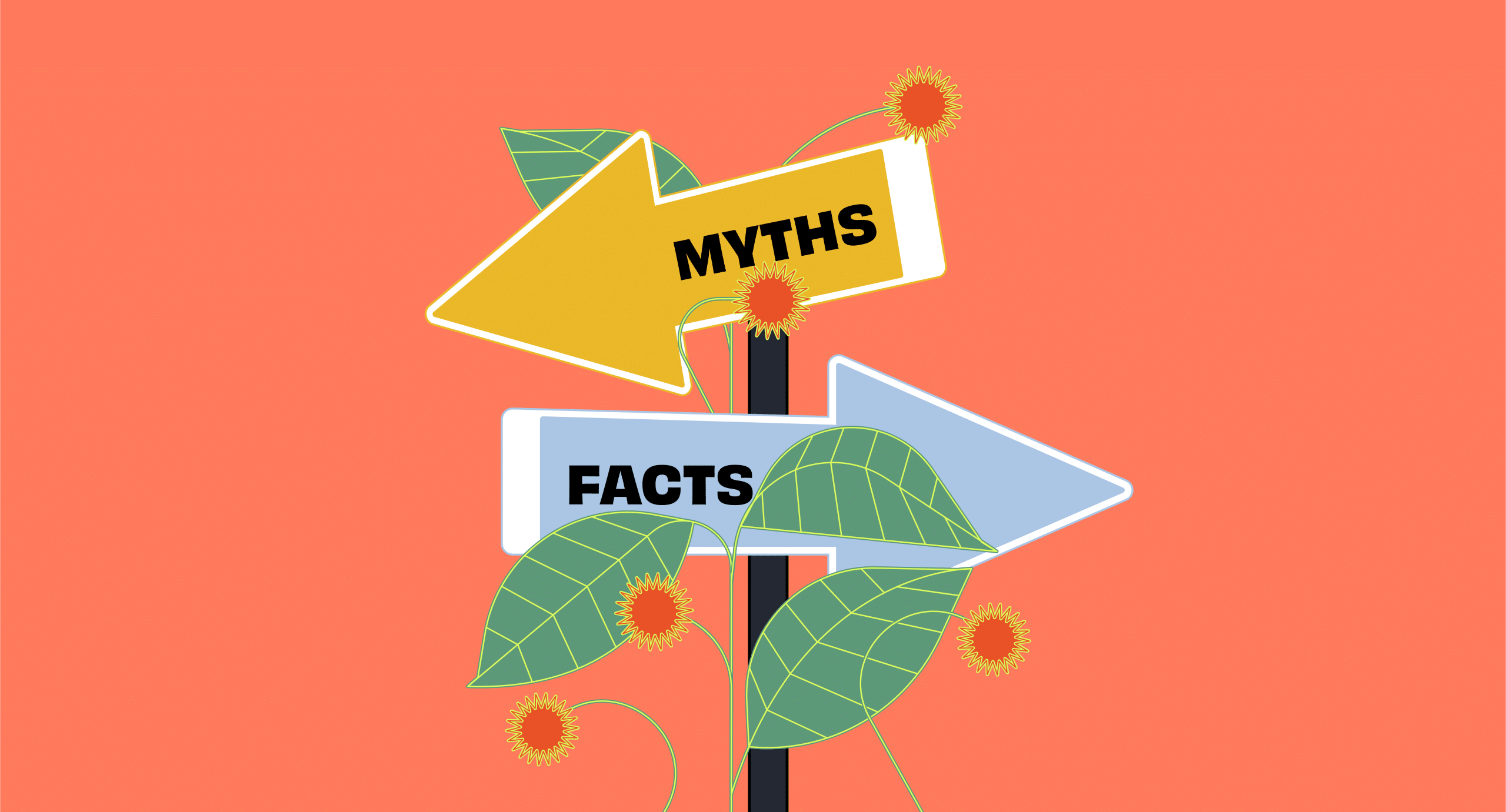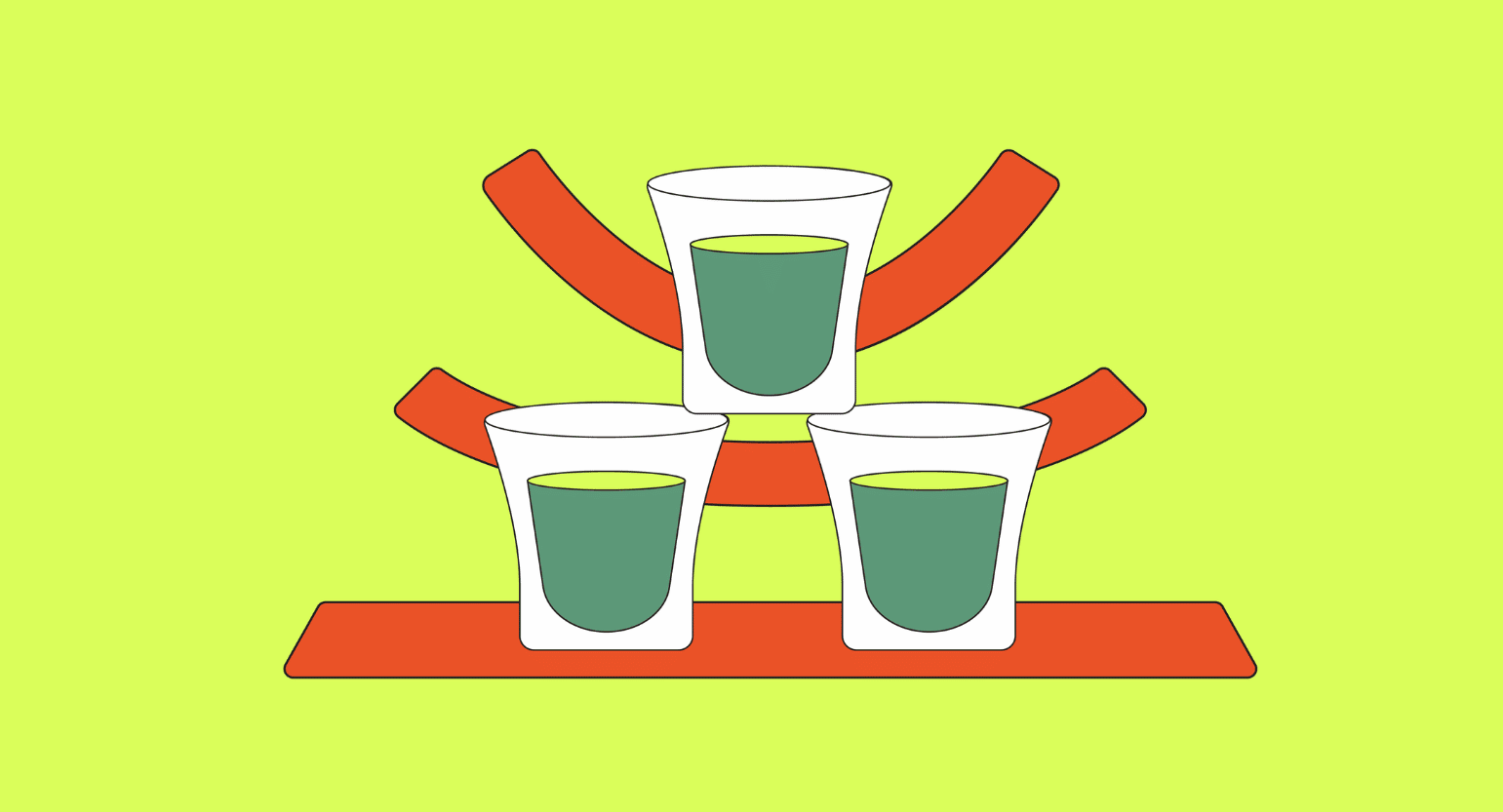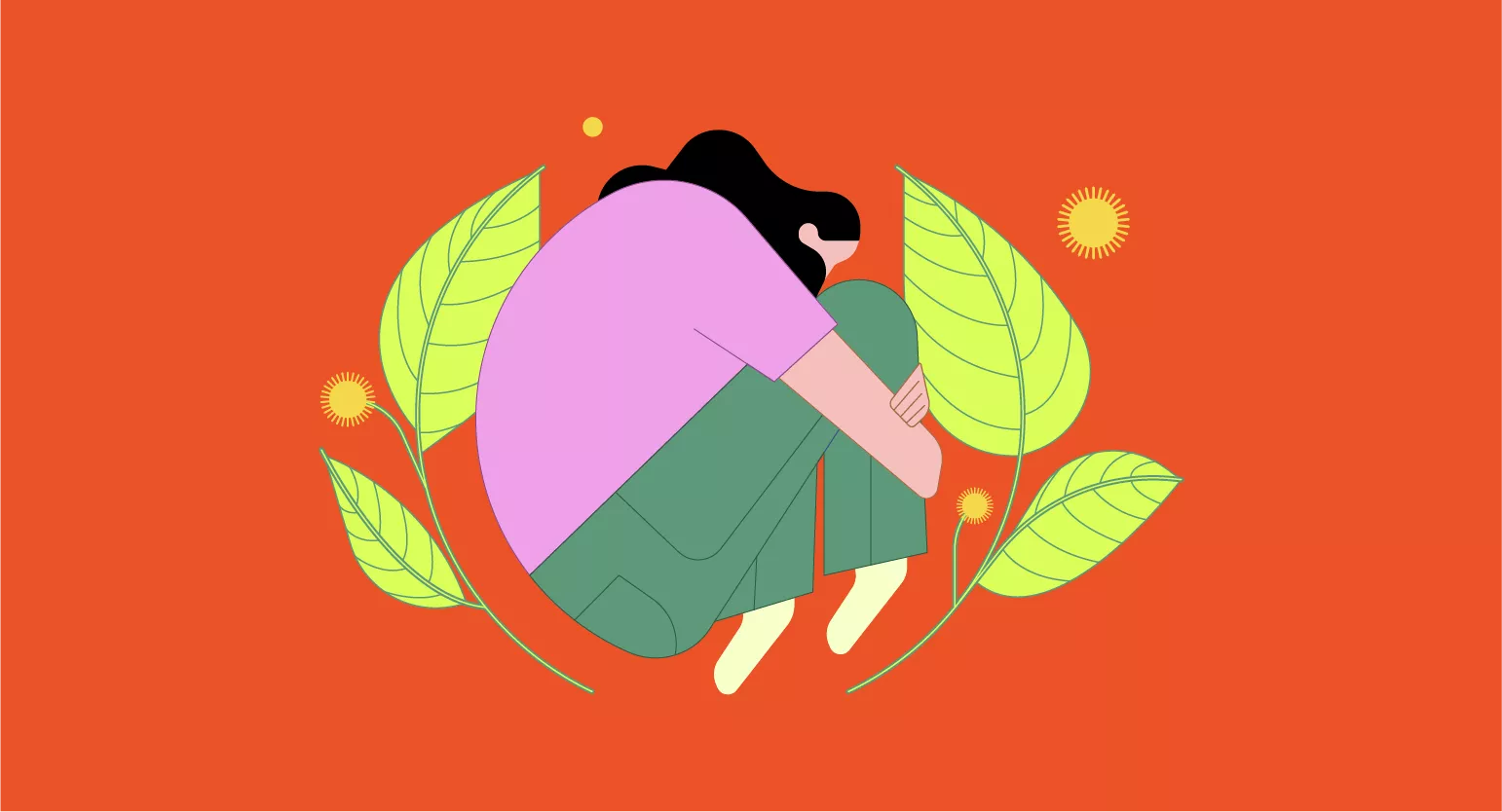Does Kratom Interact With Modafinil?
Yes, kratom and modafinil have a high chance of interacting.
Due to the broad spectrum of effects that the kratom plant can produce, the psychoactive interaction between the two compounds will change.
If you take low doses of kratom (stimulating effects) with modafinil, both compounds’ effects can potentiate each other, and you may experience a heightened risk of side effects. This is known as an agonistic interaction.
If you take a high dose of kratom (sedative effects), you may completely negate the effects of modafinil. When two drugs cancel out each other’s effects, we say they have an antagonistic interaction.
Both outcomes are undesirable and potentially dangerous.
Moreover, metabolic interactions are also likely when combining kratom with modafinil.
Modafinil has been shown to cause induction of the CYP1A2, CYP2B6, and CYP3A4 enzymes [1]. This means modafinil increases the activity of these enzymes in the liver.
We also know that the CYP3A4 enzyme is the most active player in kratom’s metabolization [2].
We can then reasonably infer that modafinil promotes a faster metabolization of kratom — resulting in a faster elimination from the body.
Even though modafinil is mainly metabolized by various pathways other than the CYP450 —including hydroxylation —the CYP3A4 enzyme partially participates in this drug’s metabolism.
So, not only can modafinil induce the CYP3A4 enzyme and accelerate kratom’s metabolism, but it also needs such an enzyme for its proper metabolism.
We could also say that modafinil and kratom will potentially compete to bind with such enzyme, leading to a third drug-drug interaction known as metabolic competition.
Related: Will Kratom Interact With My Medication?
Modafinil Specs
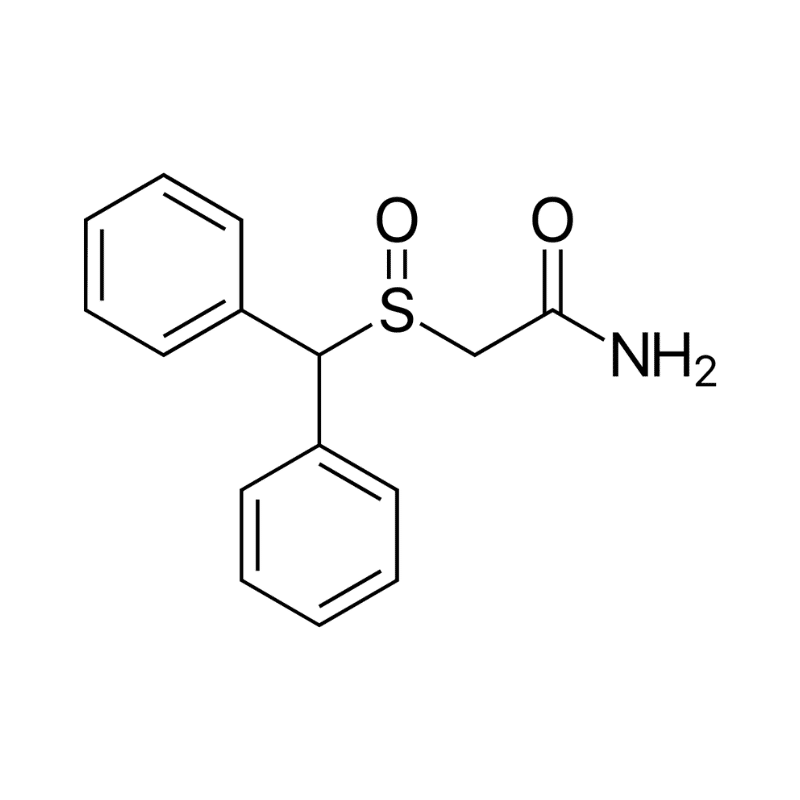
| Drug Name | Modafinil |
| Trade Name | Provigil, Alertec, Modavigil, etc. |
| Classification | Eugoric |
| CYP Metabolism | Amide hydrolysis and CYP3A4 |
| Interaction With Kratom | Agonistic or antagonistic, depending on kratom dosage. Potentially metabolic competition. |
| Risk of Interaction | Moderate to High |
Is it Safe to Take Kratom With Modafinil?
No, combining kratom with modafinil or any prescription stimulants is unwise.
On their own, kratom and modafinil have a relatively high level of safety. Neither substance is likely to lead to an overdose on its own.
However, this doesn’t mean there aren’t any risks when combining these compounds.
There is some doubt about the logic of taking kratom and modafinil. As we have seen, modafinil could potentially increase kratom’s metabolism, which would also lower the effectiveness of kratom’s benefits.
Additionally, if kratom is taken at medium to high doses, the psychoactive effects would essentially oppose modafinil’s effects (while likely still resulting in side effects such as headaches, nausea, or stomach discomfort).
There’s no good reason for combining these substances in the first place.
What is Modafinil?
Modafinil is a prescription medication used to treat narcolepsy [4].
Modafinil is usually considered a stimulant. However, it’s best classified as a eugeroic (a class of drugs that boost wakefulness).
In the United States, modafinil is classified as a Schedule IV Controlled Substance, which means it does have a limited potential for abuse.
The precise mechanism through which modafinil works remains unknown. However, modafinil is a selective, atypical, weak dopamine reuptake inhibitor and orexinergic. This leads to feelings of increased wakefulness [5].
Modafinil is not approved for children because of a higher incidence of adverse dermatological side effects, including Stevens-Johnson syndrome (SJS) and erythema multiforme major (EMM).
What is Modafinil Used For?
Modafinil (Provigil) has been approved for the treatment of daytime sleepiness disorders, including:
- Obstructive sleep apnea
- Excessive daytime sleep
- Narcolepsy
- Shift work sleep disorder
Modafinil also has several off-label uses [6]:
- Acute unipolar and bipolar episodes
- As a cognitive enhancer [7]
- Attention-deficit disorder [8]
- Cocaine dependence
It’s important to note that modafinil does not cure sleep diseases; it only treats the symptoms. Additionally, modafinil should not be considered a substitute for regular sleep.
Generic & Brand Name Versions
Modafinil is sold under the following brand names:
- Alertec
- Altasomil
- Aspendos
- Forcilin
- Intensit
- Mentix
- Modavigil
- Provigil
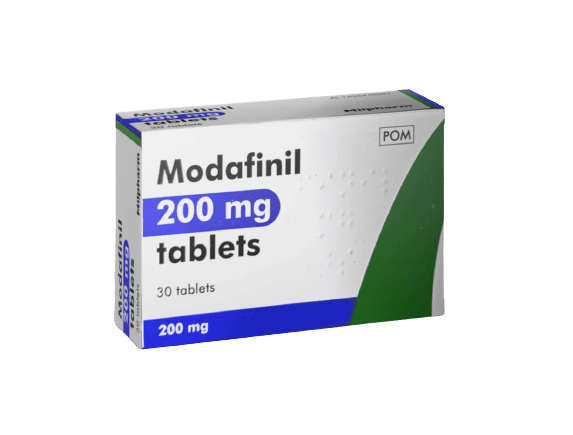
What Are the Side Effects of Modafinil?
Modafinil is widely regarded as a drug that is usually well tolerated.
Common side effects of modafinil include [9]:
- Anxiety
- Decreased appetite
- Erythema multiforme
- Headaches
- Insomnia
- Nausea
- Severe rashes
- Sleeping difficulties
- Stevens-Johnson syndrome
- Toxic epidermal necrolysis
These are all skin-related conditions. If you’re taking modafinil, immediately stop treatment if you discover any sort of skin reaction — especially involving the mucous membranes around the mouth, nose, and genitalia.
Additionally, there is no evidence modafinil causes tolerance within the body, even with long-term treatment [10].
What is Kratom?
The kratom plant (Mitragyna speciosa) is native to Southeast Asia. It’s been used and cultivated there for centuries by the indigenous people for its many benefits, like coffee or the coca leaf.
Kratom’s benefits are derived from the two main alkaloids: mitragynine and 7-hydroxymitragynine — however, there are about a dozen others with known pharmacological activity as well.
The most common uses of kratom include boosting energy levels, increasing productivity and focus, alleviating pain, and enhancing mood.
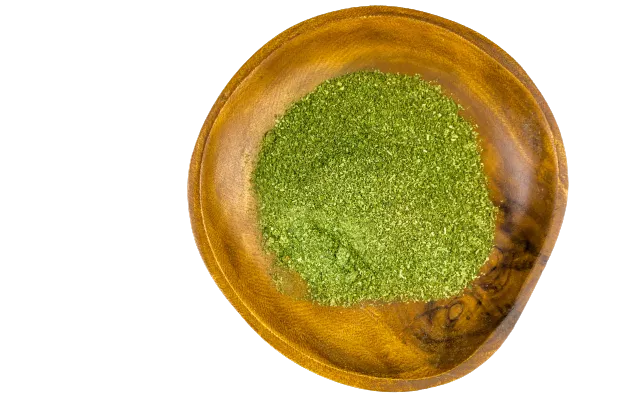
What’s the Dose of Kratom?
As with most other drugs, dosage recommendations can vary according to several factors, such as the method of consumption and treatment goals.
Generally, it’s never a good idea to take a formulaic approach to kratom dosage recommendations.
General kratom dosage recommendations include:
- Low dose (1-5 g)
- Medium dose (5-10 g)
- High dose (10-15 g)
First-timers should never exceed 5 grams of kratom.
Related: Can You Overdose on Kratom?
What Are the Side Effects of Kratom?
Kratom has its fair share of side effects, the most common being nausea, headaches, dizziness, and fatigue. Most of these effects can be avoided by going low and slow with the dose. These side effects are much more common if too much kratom is consumed.
The side effects of kratom may include:
- Anxiety or jitteriness
- Constipation
- Dizziness
- Headaches
- Heart palpitations
- Insomnia
- Itchiness
- Loss of muscle coordination
- Low blood pressure
- Low libido
- Nausea
- Poor appetite
- Seizures
- Tremors or muscle contractions
Kratom also has the potential to cause dependence and addiction. However, this can be avoided by taking tolerance breaks from kratom use and adhering to the dosage recommendations.
Do not take kratom when pregnant or breastfeeding, as it has been shown that kratom could cause unwanted weight loss, and the baby could experience symptoms of kratom withdrawal.

What Are the Different Types of Kratom?
There are several types of kratom strains.
These are thought to arise from differences in the harvesting methods used by local farmers in Southeast Asia. The strains have contrasting alkaloid profiles, which account for the difference in their effects.
If you’re looking to try kratom for a specific reason, such as chronic pain, then it’s a good idea to take a little time to research all the strains that are out there.
Finding the perfect strain for your kratom goals will allow you to experience the benefits you want while minimizing any drawbacks.

White Vein Kratom
If you’re looking for an energy boost, increased mental activity, or a mood enhancer: then white vein kratom is what you want.
This strain is quite popular with people who work long hours or enjoy stimulating creativity.
In the kratom community, it’s known as the ‘mind-based strain.

Red Vein Kratom
Red vein kratom strains are the ideal option for anyone experiencing chronic pain but not wanting to turn to pharmacological painkillers.
Red vein kratom also has anxiolytic benefits, and it’s popularly used as a sleeping aid.

Green Vein Kratom
In the kratom spectrum, green vein kratom sits right between white and red.
This means that green-veined strains have a balanced alkaloid profile that contains both analgesic and anxiolytic properties, as well as mind-based effects.
However, this means that you won’t experience the targeted nature of a white or red kratom strain.

Yellow Vein Kratom
Yellow vein kratom is thought to be a mixture of red and white strains. For this reason, it is generally not considered one of the three main types of kratom.
Yellow vein users report this strain is comparable to green kratom strains. This makes sense considering the diverse nature of yellow-veined strains.
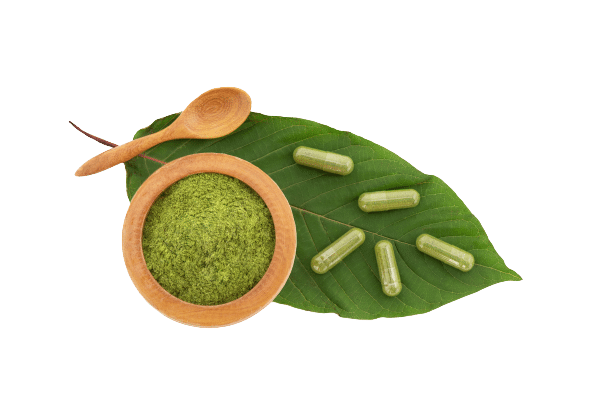
Key Takeaways: Is it Safe to Mix Kratom & Modafinil?
Kratom and modafinil are both central nervous system stimulants and should not be combined.
When two drugs work similarly and produce agonistic effects, this can increase the incidence of adverse effects.
We also know modafinil could hinder or induce kratom’s metabolism. In this sense, combining kratom and modafinil could lead to a higher risk of side effects, but it would be very rare for a severe event to occur.
Always speak to your doctor about taking kratom if you’ve been prescribed supplements or medications.
- Robertson, P., & Hellriegel, E. T. (2003). Clinical pharmacokinetic profile of modafinil. Clinical pharmacokinetics, 42(2), 123-137.
- Kamble, S. H., Sharma, A., King, T. I., León, F., McCurdy, C. R., & Avery, B. A. (2019). Metabolite profiling and identification of enzymes responsible for the metabolism of mitragynine, the major alkaloid of Mitragyna speciosa (kratom). Xenobiotica, 49(11), 1279-1288.
- Ujváry, I. (2014). Psychoactive natural products: an overview of recent developments. Annali dell’Istituto superiore di sanita, 50, 12-27.
- Greenblatt, K., & Adams, N. (2022). Modafinil. StatPearls; 2020.
- Gerrard, P., & Malcolm, R. (2007). Mechanisms of modafinil: a review of current research. Neuropsychiatric disease and treatment, 3(3), 349.
- Greenblatt, K., & Adams, N. (2020). Modafinil. StatPearls [Internet].
- Gilleen, J., Michalopoulou, P. G., Reichenberg, A., Drake, R., Wykes, T., Lewis, S. W., & Kapur, S. (2014). Modafinil combined with cognitive training is associated with improved learning in healthy volunteers–a randomised controlled trial. European Neuropsychopharmacology, 24(4), 529-539.
- Arnold, V. K., Feifel, D., Earl, C. Q., Yang, R., & Adler, L. A. (2014). A 9-week, randomized, double-blind, placebo-controlled, parallel-group, dose-finding study to evaluate the efficacy and safety of modafinil as treatment for adults with ADHD. Journal of attention disorders, 18(2), 133-144.
- Murillo-Rodríguez, E., Barciela Veras, A., Barbosa Rocha, N., Budde, H., & Machado, S. (2018). An overview of the clinical uses, pharmacology, and safety of modafinil. ACS chemical neuroscience, 9(2), 151-158.
- Nasr, S., Wendt, B., & Steiner, K. (2006). Absence of mood switch with and tolerance to modafinil: a replication study from a large private practice. Journal of affective disorders, 95(1-3), 111-114.


